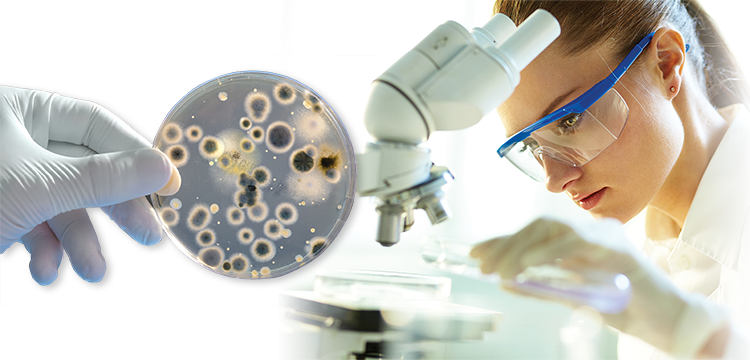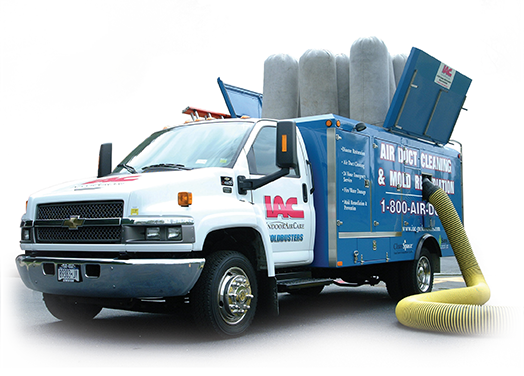

Molds can be found almost anywhere that moisture and oxygen are present and are a natural part of the environment. They live in moist places such as plants, soil, and dead or decaying matter. Outdoors, molds play a part in nature by breaking down dead organic matter such as fallen leaves, dead trees and other debris; however, indoors mold growth should be avoided. There are many types of molds and when excessive moisture accumulates in buildings or on building materials, mold growth often occurs, particularly if the moisture problem remains undiscovered or unaddressed. Molds become a problem when they go where they are not wanted and digest materials such as our homes.
Mold enters your home as tiny spores. The spores need moisture to begin growing, digesting and destroying. Molds can grow on almost any surface, such as paints, wallpaper, carpet, wood, ceiling tiles, sheet rock, and insulation. Mold can affect your clothing and other contents in your home. When there is a leaky roof, high humidity, or a flood, mold grows best. It's impossible to get rid of all molds and mold spores in your home, but because mold spores can't grow without moisture, reducing moisture in your home is the best way to prevent or eliminate mold growth. If there is already mold growing in your home, it's important to clean up the mold and fix the problem causing dampness. If you clean up the mold but don't fix the problem, the mold will most likely return.
People who have allergies or asthma may be more sensitive to molds.
Sensitive people may experience skin rash, running nose, eye irritation, cough, nasal congestion, aggravation of asthma or difficulty breathing. In addition, others who may be more sensitive to the effects of mold include the elderly, infants and children, people with immune systems are compromised due to HIV infection, cancer, liver disease, or chemotherapy and people with chronic lung disease. A small number of molds produce toxins called mycotoxins. When people are exposed to high levels of mold mycotoxins they may suffer toxic effects, including fatigue, nausea, headaches, and irritation to the lungs and eyes. If you or your family members have health problems that you suspect are caused by exposure to mold, you should consult with your physician.
When molds are disturbed, they release spores into the air. You can be exposed by breathing air containing these mold spores. You can also be exposed through touching moldy items, eating moldy food or accidental hand to mouth contact.
When you smell the “musty” odor or see small white specs or black you know you have a mold problem. Molds also can be orange, green and purple. Some molds are hidden and could be growing behind walls or ceiling tiles. Even dry, dead mold can cause health problems, so always take precautions when you suspect mold. Mold is often found in areas where water has damaged building materials and furniture from flooding or plumbing leaks. Mold can also be found growing along walls where warm moist air condenses on cooler wall surfaces, such as inside cold exterior walls, behind dressers, headboards, and in closets where articles are stored against walls. Mold often grows in rooms with both high water usage and humidity, such as kitchens, bathrooms, laundry rooms, and basements. If you notice mold or know of water damaged areas in your home, it is time to take action to control its growth.
Because some molds can be hidden, a mold inspection and testing could be necessary. Every home has a certain amount of mold. Mold testing will be necessary to determine how much mold is present and what species of mold. Mold testing may also provide information regarding a possible hidden mold problem within the walls. There are currently no standards or guidelines regarding results of fungal samples. There are no levels, which are typical or permissible. There may be a problem if indoor mold tests report mold levels that are: (a) higher than the outdoor mold levels; (b) present indoors but absent from the outdoors; or (c) the indoor mold is pathogenic.
Yes by keeping your house dry and by fixing any moisture or leaks in your home.
Clean up mold and take care of the problem by following the advice above to keep your home dry and keep mold out. It is important to act fast as mold damages your home as it grows. Clean it up as soon as possible. Decide if you have a large or small area of mold. A small area is less than about ten square feet, or a patch three feet by three feet square. If you have a lot of mold damage (more than ten square feet) consider hiring a professional. If the moldy area has been contaminated by sewage or is in hidden places, hire a professional. The source of moisture must be found and eliminated; otherwise fungal growth will continue to occur.
Protection should always be used; Goggles, gloves, Tyvek suites and breathing protection while working in the area should always be worn. For large consolidated areas of mold growth, an Occupational Safety and Health Administration (OSHA) approved particle mask should be worn.
Working Area should always be sealed off from the rest of your home and heat registers or ventilation ducts/grills should be covered. Contents – will either have to be discarded or cleaned. All affected areas should be scrubbed with an approved EPA bio wash and encapsulated with an approved EPA product. All areas including ceilings, walls and flooring should always be Hepa vacuumed.
Clearance testing should always be performed after remediation is complete.
If you don’t get to the source of the problem, most importantly the mold will grow back. It can grow under the paint and the paint will only peel.
Mold problems in buildings are a result of water and moisture problems. Excess moisture comes from leaks or condensation. Tenants and landlords both have responsibilities for addressing water and moisture problems that can cause mold. Generally, fixing leaks is the landlord's responsibility and reducing condensation is the renter's responsibility.
If you don’t see visible mold but have a musty odor, a mold inspection is important. If there has been a leak or a flood in your home, there may be mold growing behind a wall if it wasn’t dried out properly. Even a clean, dry house will have some mold spores, but not enough to cause health problems. If you smell mold it may be hidden behind wallpaper, in the walls or ceiling, or under the carpet. If you suspect you have hidden mold be very careful when you investigate, protect yourself from exposure.
